Yellowstone National Park
In the fall of 2014 my cousin and I landed in Idaho Falls to begin to explore and photograph one of the most seismically active parts of the planet. Yellowstone National Park is a nearly 3,500 square mile wilderness recreation area that sets atop a volcanic hot spot. Mostly in Wyoming, the park spreads into parts of Montana and Idaho. It features dramatic canyons, alpine rivers, lush forests, hot springs and more geysers than anywhere in the world. The park is home to bears, wolves, bison, elk and antelope, along with hundreds of other species. We encountered people from many countries and had a good time making up our days as we went along. Initially we planned a route early in 2014 that would take advantage of the roads and lodges to maximize our time on the seven day outing.
On the first day, we arrived at the Idaho Falls Airport and had a one hour drive north on Route 20 to the town of West Yellowstone. On the way we decided to detour for no reason through the Targhee National forest to do some sightseeing. On the way we came across this cool scene at sunset that seemed to embody the word `Idaho`. We then drove off into nowhere before we decided to head back to the main road to find lodging for the night.
Somewhere on route 20 in Idaho
Old Faithful Geyser Basin
After getting some sleep at the Alpine motel in West Yellowstone, we got up well before sunrise to drive South to one of the more well-known attractions in Yellowstone, Old Faithful. The area surrounding this popular site is filled with interesting thermal features. Nearly a fourth of all geysers in the world are found in the Upper Geyser Basin surrounding Old Faithful. When we arrived at the lodge, the parking lot was amazingly pitch black and deserted. We weren`t certain which way to go and ended up setting out in different directions. The first eruption guided us by the sound of the 200 degree water rising as many feet in the air and giving off a misty spraying sound. We stayed in this area for a few hours during sunrise and watched two more eruptions while the crowds began to grow. As the cool fall air settled in, we decided to hike the basin and get a view from higher ground and discover some of the lesser-known geysers, colorful hot springs and steaming fumaroles.
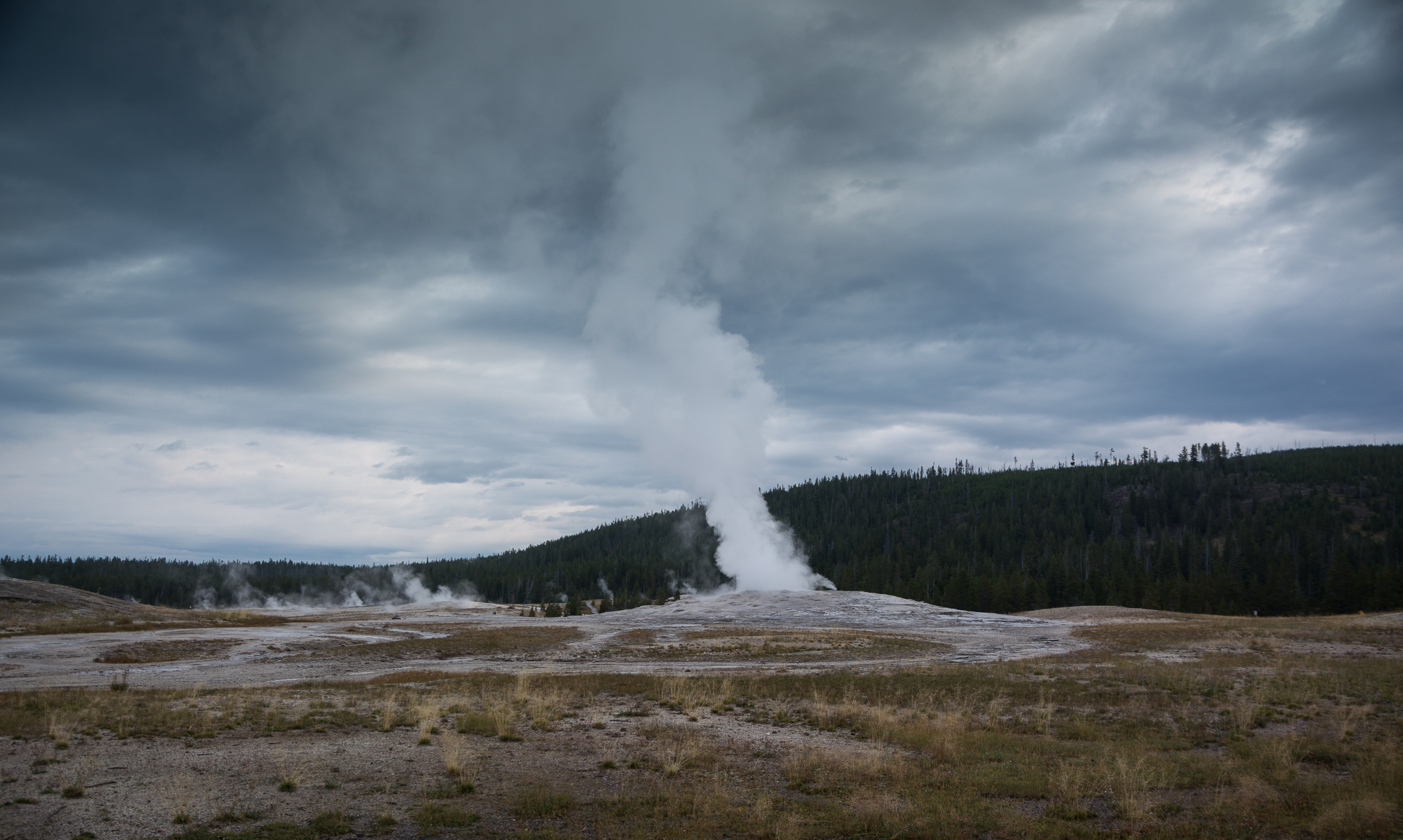
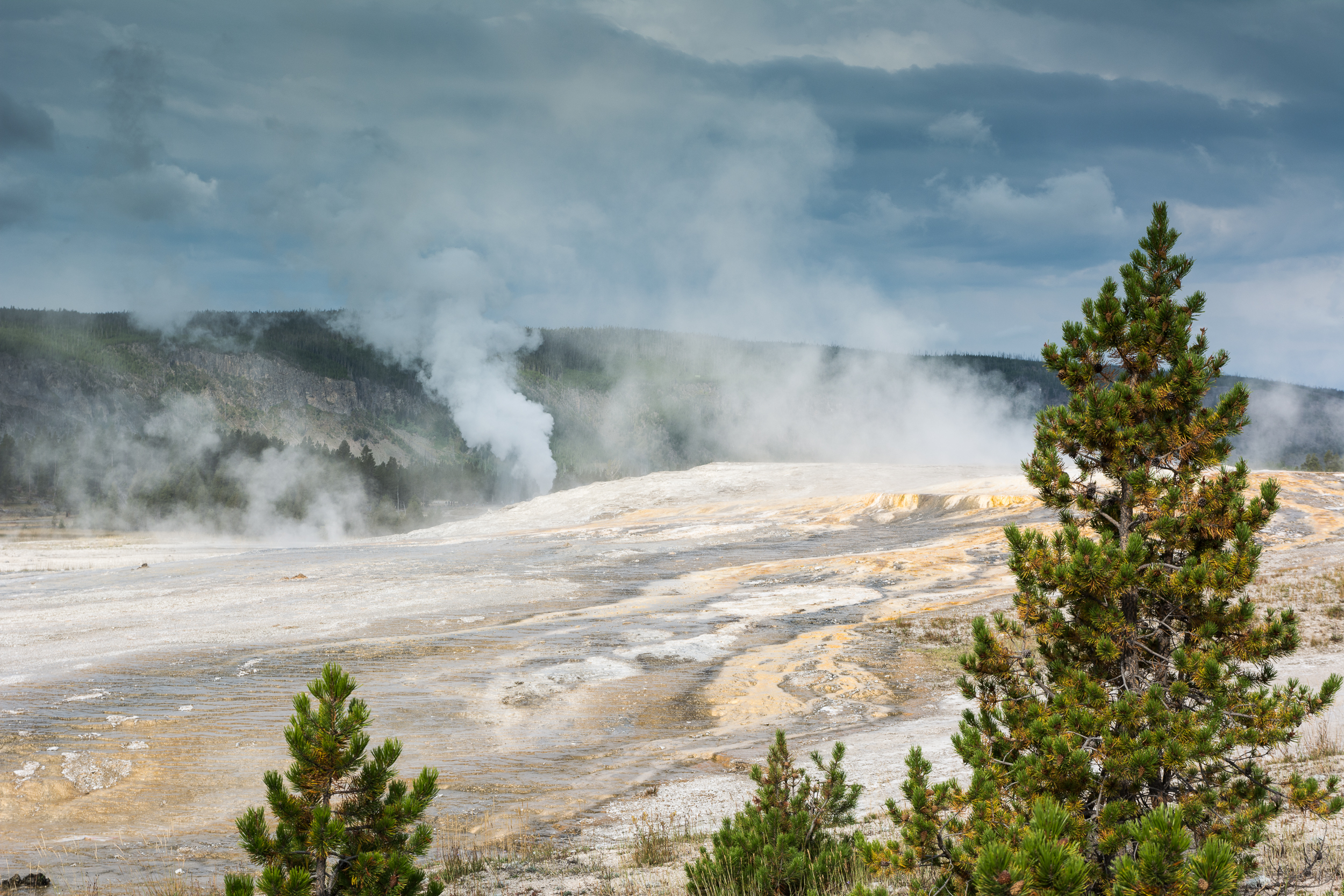
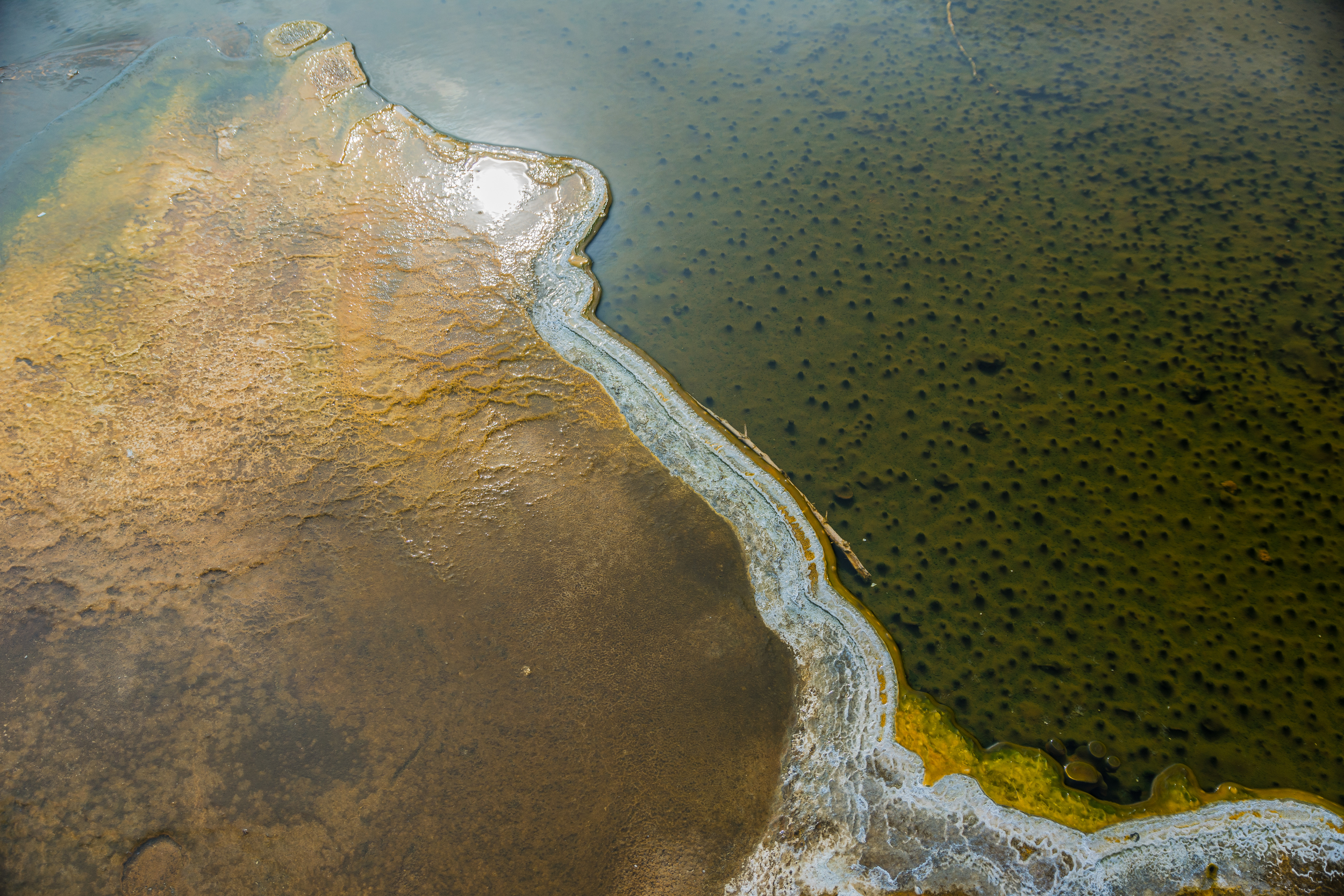
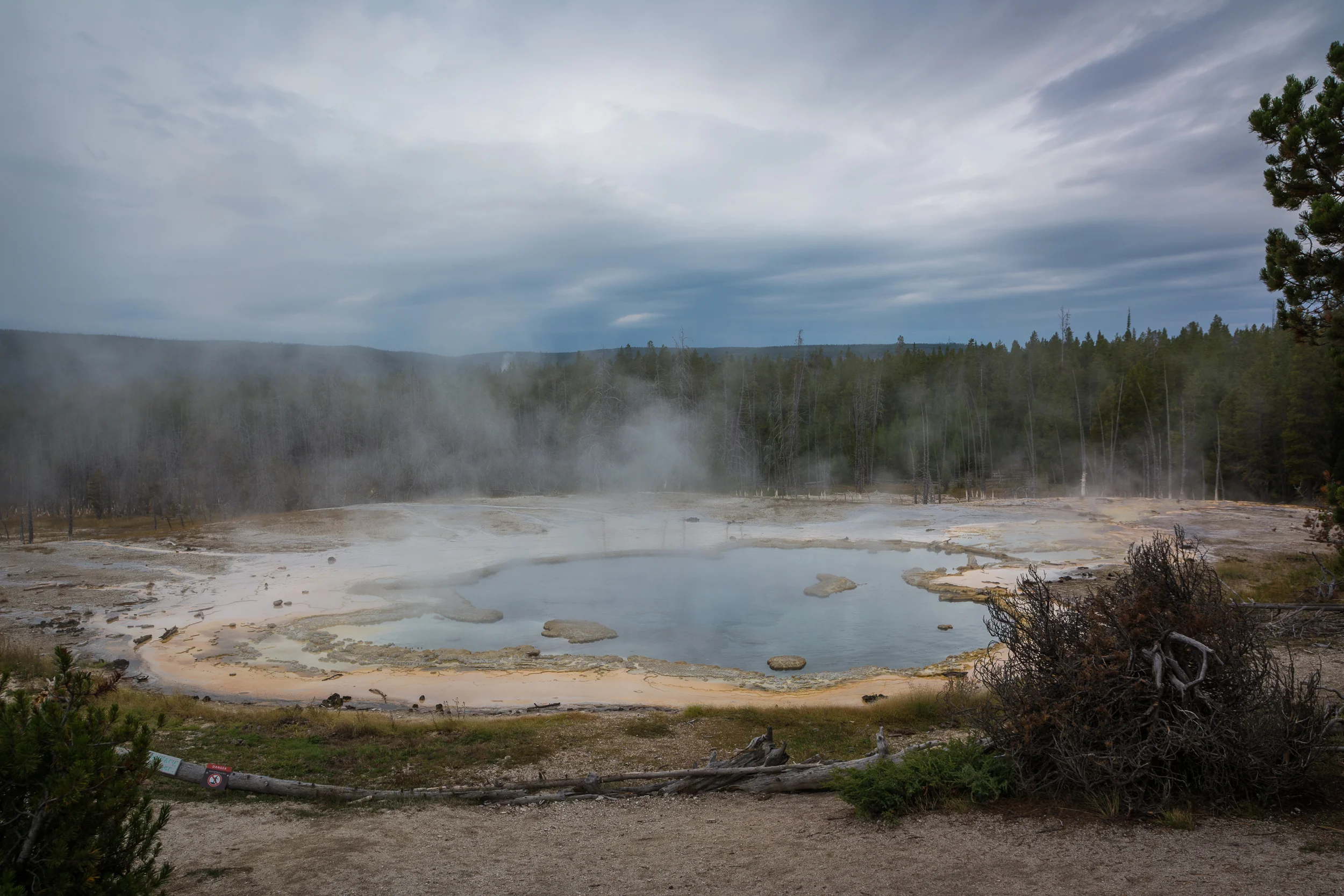
The Lake
As the misty day wore on and the rains settled in, we decided a short nap in the Jeep was in order. After waking to an overly warmed car and running low on peanut butter bars, we decided to make our way east to Grant Village and the West Thumb Geyser Basin where we`d be spending our next night. There, the geothermal activity meets the water of Yellowstone Lake, which brings about a whole new landscape. The weather had not been kind to us so far but it somehow added to the mystique of the area. I wasn`t prepared for the size of the lake which had the distinct feel of one of the Great Lakes. Like many features in Yellowstone, the lake is a product of volcanic activity. It now sits 200 feet lower than in the past and the western "thumb" of the lake was formed by a large volcanic explosion that occurred approximately 150,000 years ago.
Ansel`s Inspiration
On the morning of our third day in Yellowstone, we woke to more damp weather. Our course plans would take us north, around the western edge of the lake and to Upper and Lower Yellowstone Falls. This was one of the highlights of the week in a place that felt almost like fantasy. The majesty of the falls has been captured by many, including photographer and environmentalist Ansel Adams, who was fascinated, like most, with this part of Wyoming.
Big Sky
This day ended with clearing skies and a beautiful drive east to Cody Wyoming, then North to Red Lodge, Montana. In one of the more memorable drives of my life, the legendary big sky of Montana opened up before us with distant storms and clouds giving way to sun as it set. I could see for what seemed like twenty miles in every direction.
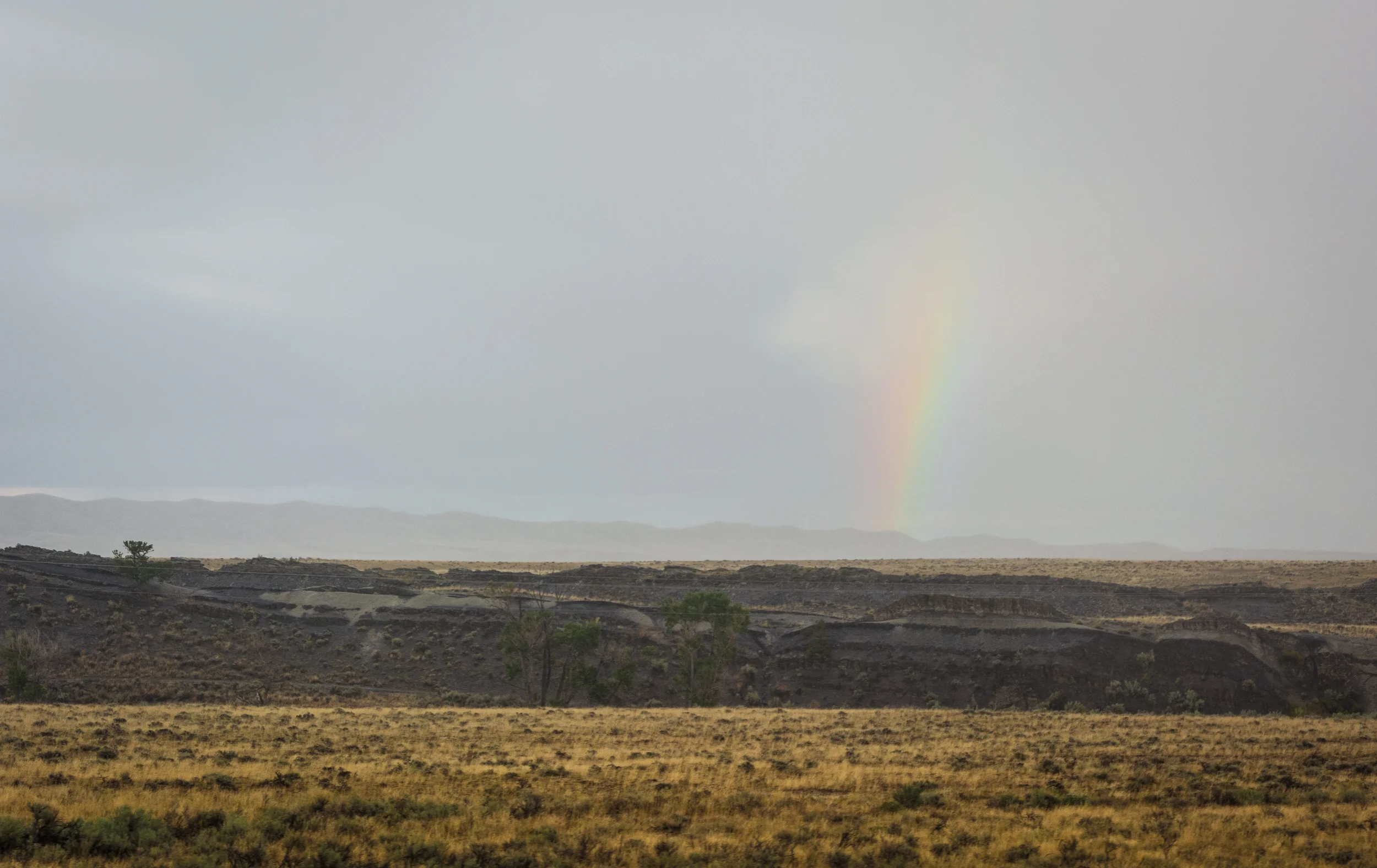
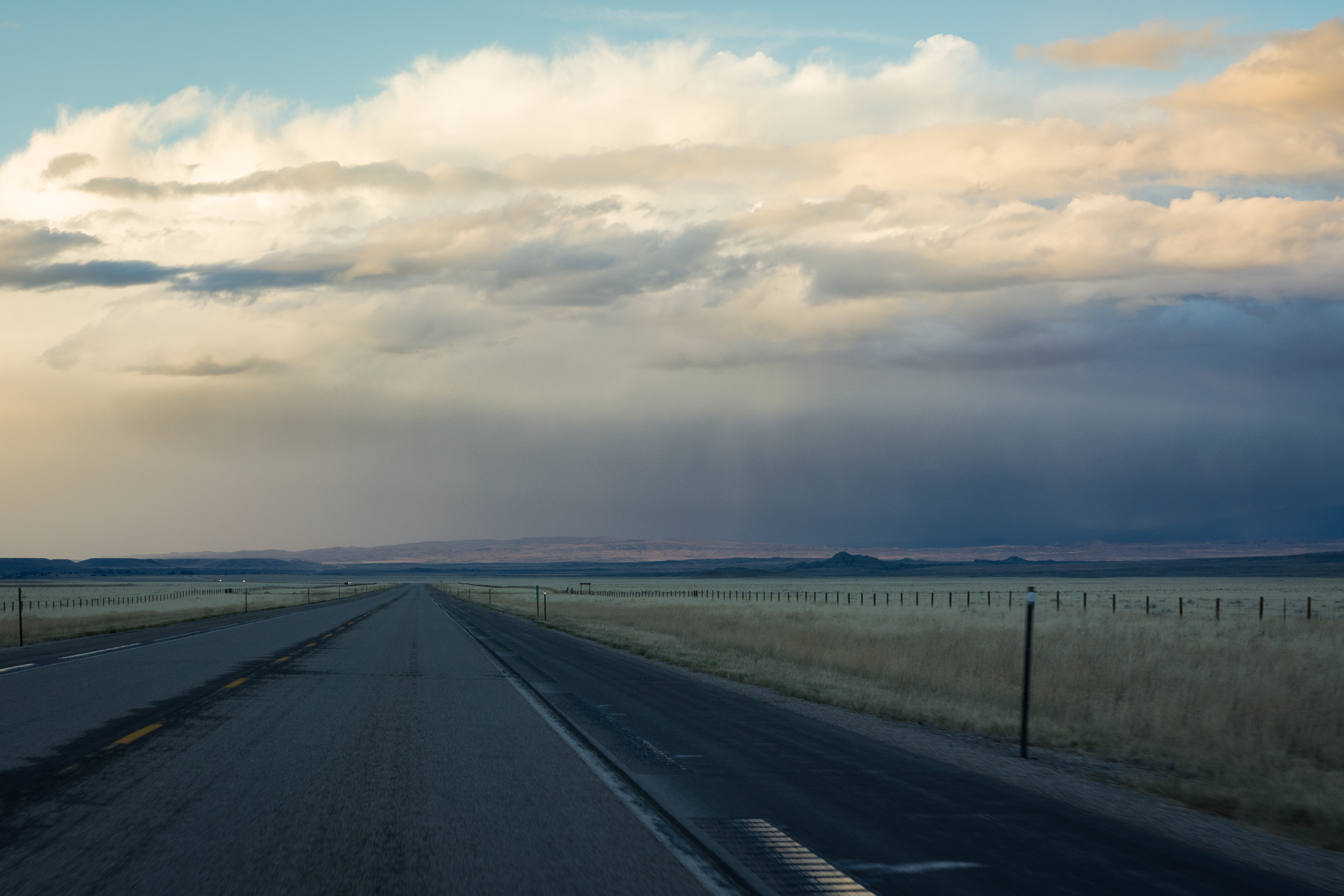
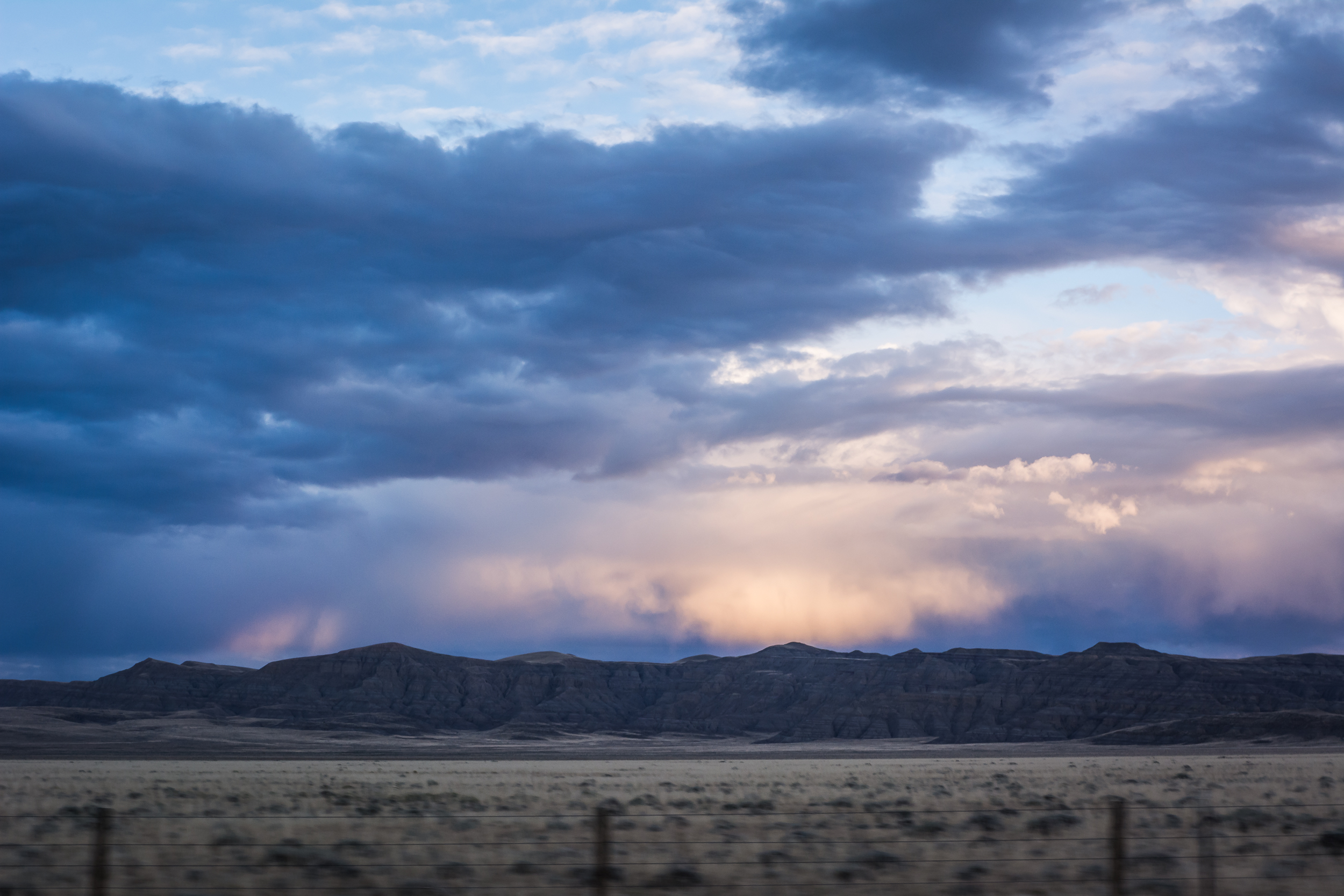

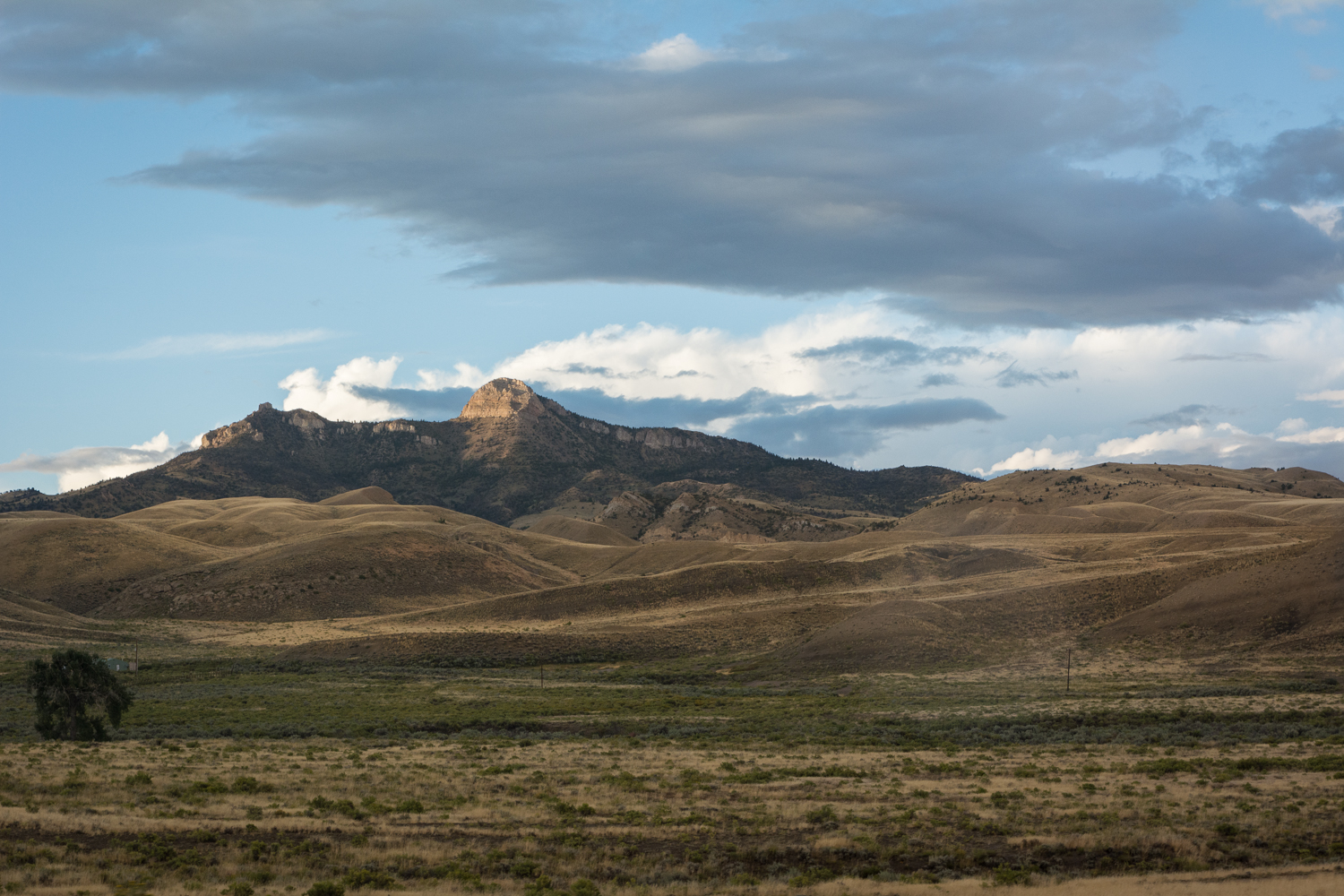
Beartooth Highway
After an overnight stay at the Yodeler motel, we got up early to get breakfast and explore Red Lodge. There was a festival of some sort taking place and the weather had broken. From this point on we stayed dry and the surrounding landscapes became even more breathtaking. As we planned our adventure months earlier (ok, days), Dan had mentioned a particular stretch of highway to the north, in Montana, that we may want to check out. The Beartooth Highway is closed in the winter months, starting in October, due to severe sudden snowstorms at high elevations. Being only September 1, we were in for some unbelievable alpine views. A series of switchbacks in the middle of a 68 mile-long byway leading to Cooke City, the road was opened to automobile traffic in 1937. It offers fantastic views of the Absaroka-Beartooth wilderness and a series of glacial lakes and valleys. This corridor runs through three National Forests bordering Yellowstone and contains over 20 peaks that exceed 12,000 ft. It`s the highest highway elevation in Wyoming and Montana. We stopped often on the drive to admire the land. Our hopes at making Gardiner by nightfall seemed meaningless.
Mammoth Hot Springs
We would be spending two nights in Gardiner Montana, a small old-west style town, typical of this part of the country, before heading south for the Tetons. This gave us some time to explore the north end of the park and some of the hot springs in the area. After a morning foraging for nuts and berries (just kidding, I think we had pancakes), we arrived at Mammoth Hot Springs around midday. Not an ideal time for pictures due to the harsh lighting, but in a place like this you rarely want to put down your camera. Mammoth sits on the Montana-Wyoming border and is a remnant of a volcanic explosion 600,000 years ago. The terraces here are created when snow melt and rain water seep into the ground. The water is warmed by heat radiating up from the magma chamber before rising up again to the surface. The geology here is interesting... To a geologist. The bottom line is, through time, and with a vast underground plumbing system, calcium carbonate and hot gases charged with carbon dioxide dissolve the limestone creating the whitish deposits called Travertine. It`s all very surreal, and with a whole catwalk system surrounding the area, you can get very close to the deposits.
Yellowstone Falls
After hearing rumors of road closings on the western loop road heading south, we decided to take advantage of the sunshine and stop at the waterfalls again to take the trails adjacent the falls and to get some pictures from a different angle. The 500 or so steps to get to the lower lookout, along with the path leading to it, were very steep. I`m not sure everybody would walk this trail but I was surprised at how many older people were actually on the landings.
The Bear... and Pete
On our way south toward Grant Village we stopped many times between the Falls and Grant Village to take photos of the land and wildlife. On one particular stop to film some bison along the road, Dan was nearly mauled. Or... Yelled at by the ranger. Actually it was me yelling at him. I think he was in my shot. Anyhow, there was a park ranger who told us about people near Indian Pond, south of us, who spotted a grizzly bear feeding on a carcass between the pond and Yellowstone Lake. We hadn`t seen a bear to this point so we jumped into our Jeep and headed south. It came to surprise me that only about 1,000 grizzlies remain in the U.S. The majority of them being in Montana and Wyoming. Part of the problem is climate change that is diminishing their food supply. In other words, humans are the problem.
Indian Pond and Yellowstone Lake
Upon arriving, we knew we`d found our bear when we ran across 15 cars and about $50,000 worth of photography gear set up above a large calm body of water. Most of the group was centered around a large man seated behind a top-of-the-line Canon camera and a lens that cost more than a good used car. This was Pete Gentes, a retired IT guy who spent a good deal of his time travelling to parks and getting shots of wildlife. We talked to him a while and he seemed to be the`leader`of the spectators and had been at this site for the past seven hours. It was sunny but cool as the temperatures hovered around 40- WAIT! "HIS HEAD IS UP !" Pete shouts over the howling wind. A barrage of shutter-fire breaks the stillness like miniature machine guns. About 100 yards away, a large brown head pokes up from the steppe grass and yawns. Then it disappears again down out of site. We estimate about 8,500 pictures were taken within the last 12 seconds. Pete tells us how earlier the bear had gotten up to go down to the water to get a drink and he shows us some shots on the back of his camera. We spent the next three hours there with our new friend and a lazy bear, talking about gear and travel. We decide we like Pete.
Here`s Pete
Here is Yogi
We are not alone.
There was a park ranger here as well, which is common when an animal is sited close to the road. He informs us that this bear knew we were there by his outstanding sense of smell and that if he wanted to eat us, the 50 yards we`d have to run to our cars wouldn`t be nearly close enough to save us. That being said, we turned to see a commotion to our right. It was a large male bison thundering up the hill from the pond onto the road. Ranger Rick informed us that the bison could probably cover more ground, faster than the grizzly, if need be. Bison are, for the most part, calm animals, but being in rut this time of the year they can be aggressive if provoked. Also they do not care where humans are or what they are doing. They are not afraid of you and will walk out in front of your car because it probably weighs less than they do.
As the winds increased and the light faded to the point where we couldn`t see the bear very well, we decided to make our way back to Grant village, so we said our goodbyes and went in search of some dinner. Our time in the park was coming to a close before we would load up to go to the Grand Tetons for our last two days in the west. We had seen some spectacular views of this part of our country and come to respect those who fought to preserve this land so that over four million people annually can enjoy this natural wonder. Many names of the features, landmarks, geysers and valleys are named after those who helped pioneer this land, explore its wonders and protect Yellowstone for the rest of us to enjoy. If you are interested in reading more about the park and its history, I`ve created some links for you to check out.
Some unexpected finds
We were searching for the most dangerous place on Earth. Well...
Somewhere in southern Montana you will find this Big Boy in the middle of a large field. It seems a little out of place.
Weird things happen to your chips at 10,000 ft.
The Animals
I can`t end this post without sharing pictures of some of the wildlife that inhabits Yellowstone National Park. There were many animals that remained elusive to us on this trip but what we did see was very humbling and it leaves you with an appreciation of the other species that call this place home. They were here first and a lot of times in society, humans tend to see wildlife as a nuisance or as a trophy to be killed for sport. Seeing these majestic creatures in their habitat gave me satisfaction in knowing there is a place where they roam free and can be appreciated. Yellowstone is home to an estimated 200 wolves of which were reintroduced to the park in 1995. I caught a few images from a very far distance, but considering the size of the area in which they still exist, it was a rare event.































